It was the 3rd of March, 1984. I was about to step into my teens, that December. Baba brought me a velvet-covered booklet, with the words “Autograph Book” embossed on its cover. There, on the first page of my first “Autograph Book”, he had drawn a winged fairy, wearing a diamond shaped pendant. I think some sense of pride had worked within him that day. Not that I was anything to be proud about. I was a skinny, dark, mischievous girl at the time.
The Ebb and Flow of Memory
Many memories flood my mind as I sit down to write this. I was more attached to Baba amongst my parents. My mother, Ila, was a school teacher. Hers was a morning school. My father also was an art teacher at a city school. But he had taken voluntary retirement after teaching there for a few years. For Baba, the mornings, when I was very young, were spent mothering me. Those were the turbulent seventies, when the city was ignited by young intellectual rebels, who dreamt of ushering in a revolution.
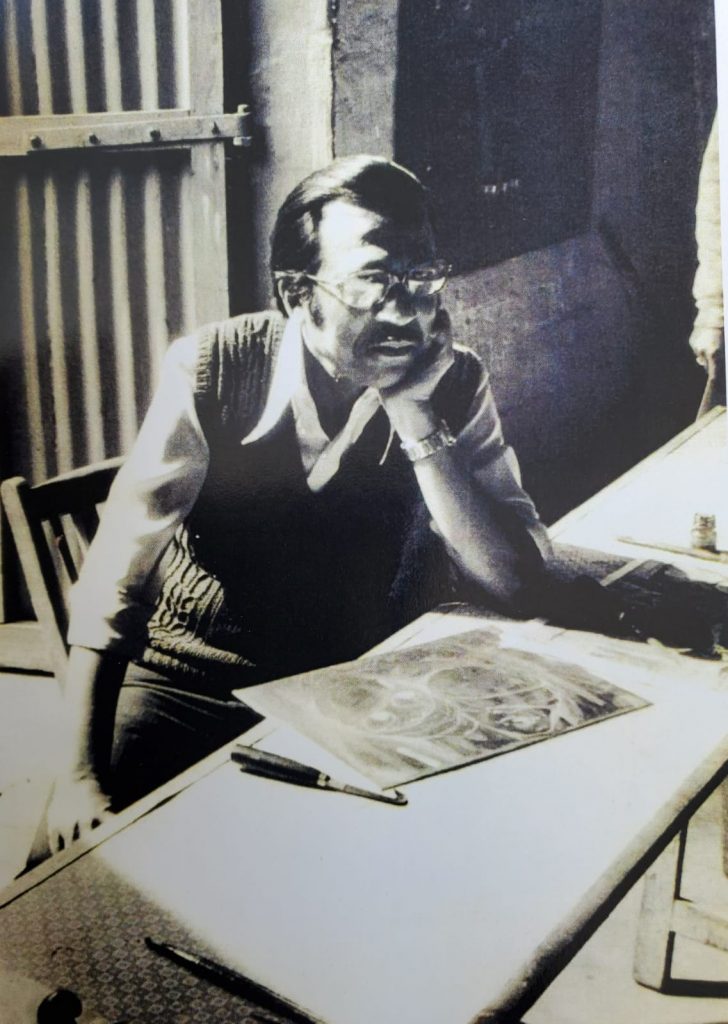
Born on 8th May (25 Baisakh of the Bengali calendar), 1934, at Ranchi (in Bihar), Baba was the youngest in a family of four brothers and two sisters. My father was named ‘Robi’ after Rabindranath Tagore. Who knew that he would go on to share many similarities with Tagore himself? Baba was confined at home for many years, because he had nephritis, for which there wasn’t any cure in those days. He had been confined on the advice of doctors who were treating him.
Family Album
Baba, being the youngest in the family and remaining ill during most of his nascent, formative years, was the apple of everyone’s eyes. He used to inhabit a world of his own, not much unlike Tagore’s own childhood. He used to enact the role of kings and princes, mostly stories that he had read at home, himself being the principal figure. Armed with paper crowns, he would often get immersed in a world of his own making.
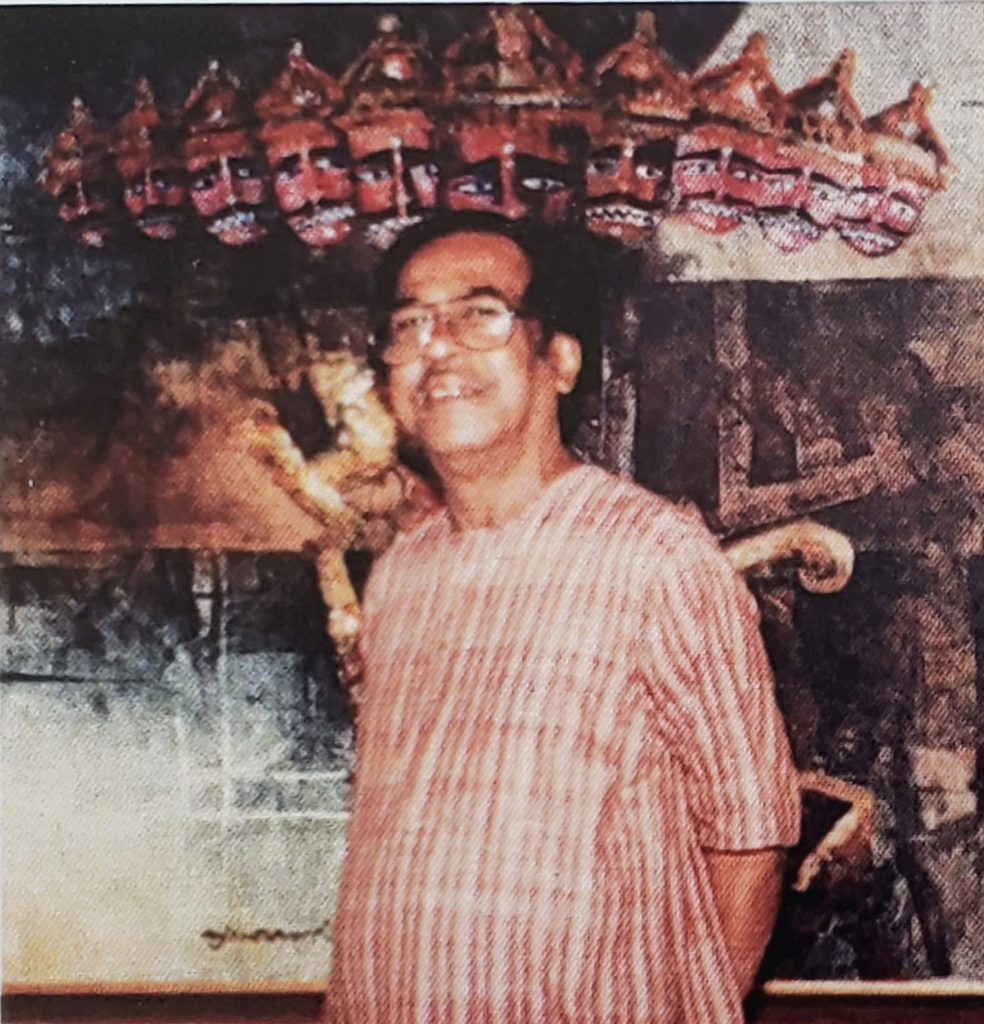
Baba had a very special and memorable childhood. Much of his early childhood was spent at Mymensingh district in East Bengal (now Bangladesh). His ancestral residence lay there. So the whole family made occasional trips to Mymensingh and these journeys were etched in my father’s memory till he breathed his last. The mighty Padma, reputed for her natural beauty as well as the havoc she causes during inundation, had inspired Tagore and local folk singers likewise. Legendary folk artist Nirmalendu Choudhary’s rendition of “Bhashayili Re” takes us on a journey down the rivers of East Bengal.
The boatmen had some very interesting stories to relate and the children, especially my father, would listen to them with rapt attention.
By this time, the Second World War that was to leave an indelible mark on world history, broke out. People started vacating their homes in cities because of mass hysteria. Like all the other families fleeing the city, my grandfather too wanted to vacate his dwellings at Calcutta. He decided to settle at their ancestral house in East Bengal and wait for the panic and devastation to ebb. When a status quo although temporary, seemed to have been attained, the family again shifted their base back to Calcutta.
These journeys were covered partly by boat and partly by railways. The boatmen had some very interesting stories to relate and the children, especially my father, would listen to them with rapt attention. They also used to serve some delectable food on these memorable travels down the waterways. Their mutton curries, served on plates made from ‘sal’ leaves, popularly known as “Goalondo mutton curry” were delectable. Even a few years back, when my mother used to prepare mutton curry at home, Baba argued, these were best savoured sitting on a boat, traversing the river Padma in East Bengal, Bangladesh.
The worn out sepia toned pages of history
The year was 1942. Baba was just about eight years old then. He was to experience first–hand, the momentous chapter in the annals of Indian history – the Great Bengal Famine. This historical incident, left such a deep impact on my father’s psyche that the themes of hunger and utter deprivation haunted his paintings, eons of years afterwards.
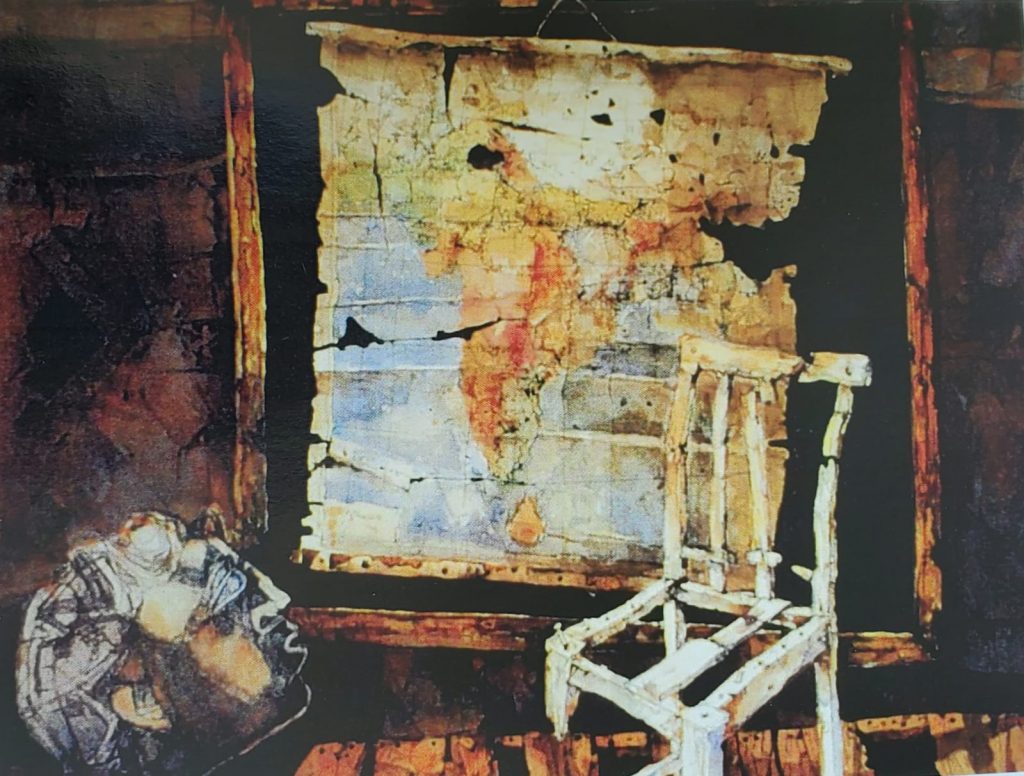
Baba was considered to be a master water colourist. In his words – “The imagery in my paintings comes mostly from personal experiences. It is the visual world and its influences on me that I try to reveal in my works.” His body of work constitutes a major turning point in the history of the Bengal School of Art. He is credited with adding depth and intensity to the medium of water colours, at a time when the Bengal School traditionally used the medium to depict purely one dimensional landscapes.
The British painter, J.M.W.Turner is regarded as the greatest water colourist. Baba’s style of painting, many critics felt, was akin to that of Turner. Turner too was closely associated with rivers, the Thames being his favourite. He is rightly called “the poet of water colour”. Baba’s kinship with Turner is deep, quite apt and accurate. He used to apply washes upon washes of transparent water colour in order to accentuate the play of light and shade in his paintings, often to create the desired depth. I used to watch my father work with rapt attention, in my childhood days.
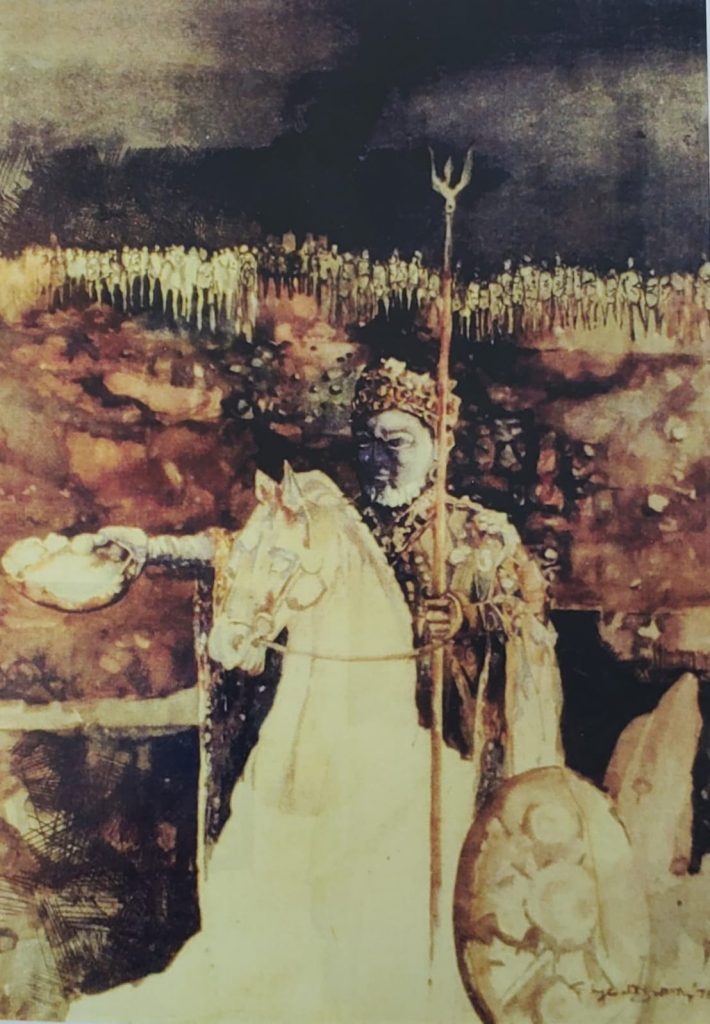
Visva –Bharati University and Santiniketan held a very special place in my father’s heart. When he was a student, he had wanted to study at Visva-Bharati but could not fulfil his dream due to financial constraints. But masters of Kala Bhavan, like Ramkinkar Baij and Benodebehari Mukherjee had left a deep impact on his entire artistic oeuvre.
Experiencing first-hand the disasters of the Second World War was a milestone in the development of the artistic self residing within Baba. These experiences were reflected in the works of his mature years too. The horrendous implications of the Bengal Famine were mirrored in his famous ‘Broken Bowl ‘series. Whatever the central subject or theme of his works may be, there was this presence of a bowl which was, in most cases, a broken one. This had two symbolic connotations.
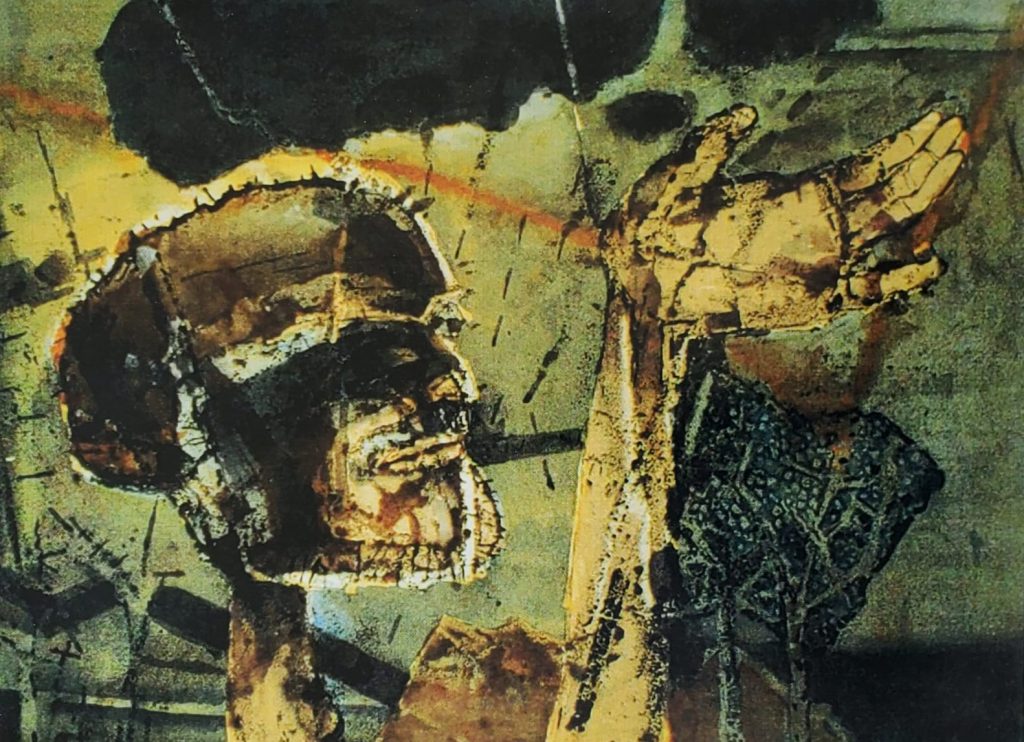
His ‘Broken Bowl’ series were predominantly works done in the latter part of the sixties and much of the decade of the seventies of the past century. The fact that the begging bowl of an alms seeker is ‘broken’ was a fine mockery of the prevalent social backdrop. On another level, the central image of the ‘ broken bowl’ in almost all his paintings of this period, talks about the inherent penury residing within a chaotic opulence in the hands of a select few. Known worldwide primarily as a fore-running water colourist of modern India, Baba raised the level of the medium to a position where he could depict the social, often political, ambience that he experienced all around him. The human condition, the toils and struggles of the common man, the angst residing deep in the human psyche were his focal themes.
The subject of many of his paintings had been that of disillusionment. It could be with the existing social order, the economic system or the disintegrating education system. Man, when he is not the artist’s common man, is present in his emaciated, ravaged form. Man-woman relationships have surfaced time and again in his works. Woman, is depicted not as an object of desire, but rather portrayed against the prevailing social system. In other words, she could be a beggar or a little girl looking up at a flock of birds flying across the sky. Little boys with fishing nets on the shore, ravaged, decaying princely estates and their vacuous denizens formed much of my father’s artistic oeuvre.
A Kaleidoscopic Persona:
My dad’s friends were not restricted to the circle of art alone. Poets, musicians, academicians, were close associates of my father till his last day. In his condolence meeting held at Birla Academy of Art and Culture, a close friend of Baba had chosen to address him as “the focal point of a tea shop”. And that was no overstatement. He had that magnetic quality in him, which attracted artists and art lovers in hordes. He could sing almost any ‘Rabindrasangeet’ effortlessly. He used to sing at the open-air art fairs that used to be held in the city during the winters.
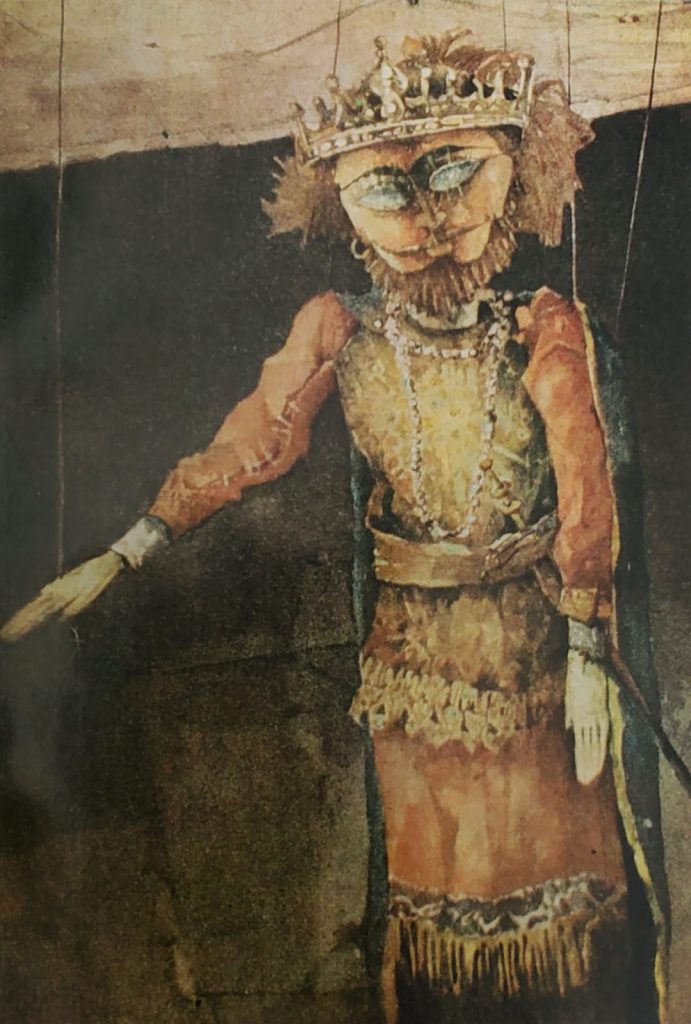
Baba was an ‘incorrigible romantic’ at heart and an avowed optimist. His works, like those of many of his contemporaries, had initially faced rejection. There was a time when the works of these young painters, who would later go on to become masters of the Indian art scene, just would not sell. As far as Baba was concerned, receiving the Gold medal from the All India Exhibition held by the Academy of Fine Arts, Calcutta, in the ‘60s was undoubtedly a turning point. It was a very prestigious recognition for an upcoming artist like himself.
Baba was an ‘incorrigible romantic’ at heart and an avowed optimist. His works, like those of many of his contemporaries, had initially faced rejection.
Artists, to my mind, are like doves, migrating from one situation to another, spreading the message of peace and universal brotherhood. Art transcends all barriers – of caste, creed, economic and social strata – and builds a language that is universally understood. Staunch followers and endorsers of ‘post-modernism’ hold the hypothetical condition that art is life or living, but the concept of the artist is dead. But what is art without the artist? It is almost akin to the chicken-egg conundrum. I was born in 1972. My father was the art teacher at Jagadbandhu Institution at the time. Those were the days of the Naxalite Movement. Many of his students got themselves entangled in the Movement, went on to destroy and desiccate many young talents. The Movement itself was almost nipped in the bud before it had spread to other regions of the country. Baba, ‘mastermoshai’ for his students, and our house at Sarat Bose Road had been ‘gheraoed’ by the police one night, on the assumption that the former had been providing shelter to one of his students who was a sought-after Naxalite. I was very little then. Ma can recall the incident even after the lapse of so many years. The student, in question, was later shot down at the Berhampore Jail.
Charaivate
We had travelled a lot since my very early childhood. When in school, we used to have three vacations in a single year- summer, winter and one during the durga puja. During both of our vacations and holidays (mine as well as those of Ma, because I studied and she taught at the same board of education), Baba had insisted on travelling. He used to say that it broadens one’s mind as nothing else can. This spirit which had been inculcated by my father and which had its germ in my earliest childhood is kept well-hidden in my soul, as it were, only to surface from time to time.
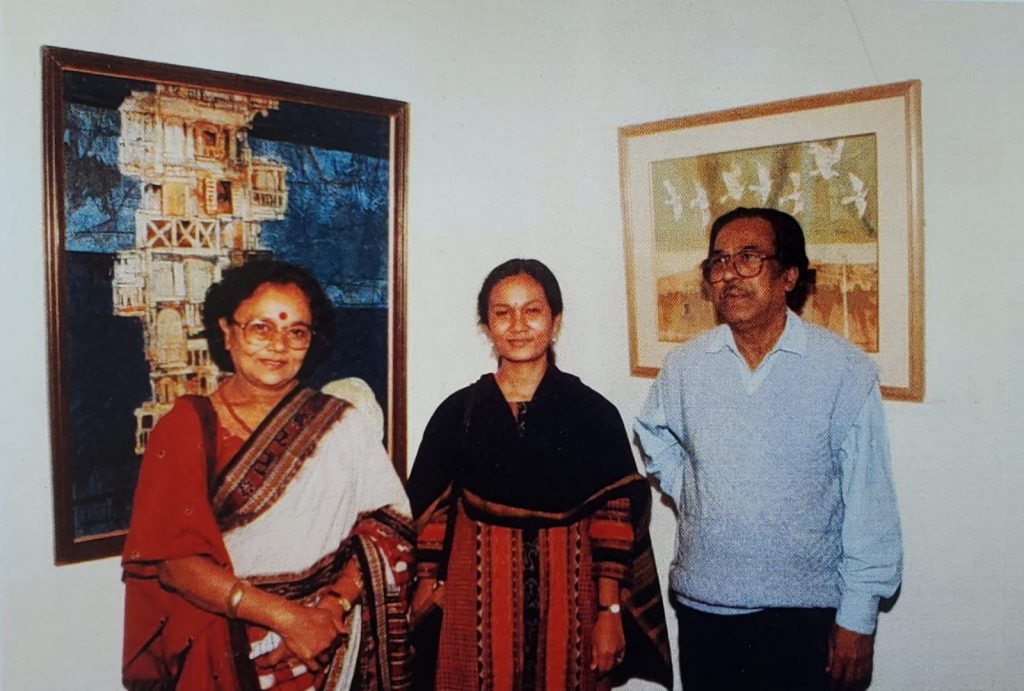
My earliest memories of travel consist of the short trips to Santiniketan. We used to go there frequently as the place was very close to Baba‘s heart. We used to stay at the Purvapalli Guest House. I still remember the plastered walls and the common dining room where the meals were served thrice every day. In the monsoons, there were possibilities of discovering frogs leaping from all unlikely places, mostly from the toilet. The Guest House had a beautiful garden, full of blooming flowers and a gravelled pathway leading to the main building. Their chicken curry was my personal favourite. Baba had been invited by Visva- Bharati University as an external examiners for their Visual Arts Section at Kala Bhavan, whose first principal had been Nandalal Bose. Baba had also been a member of the Board of Studies there.
Baba passed away during those ambiguous hours between utter darkness and pre-dawn on the 19th of May, 2005. He ended his mortal journey on earth, only to begin another one – a spiritual quest. He was seventy one when he breathed his last.
Zindagi Mingzara. In the Urdu dialect, the phrase means ‘And life goes on’. The human saga of life hardly stops for any mortal. The mortality of man is countered by the immortality of the work or tome of works that the person leaves behind for posterity. My father was very humble and whatever accolades came his way, he accepted with an elan which could be likened to a very simple living and a similar lifestyle.
For Haimanti, the journey of writing began with sending articles to newspapers, mainly The Statesman. Having an English Literature background was a big help indeed. Writing for blogs, and contributing
articles and short stories paved the way ultimately for the publication of IN LOVING MEMORY (Rupali Publications of Kolkata, 2015) and THE CIRCLE OF LIFE & OTHER TALES (Locksley Hall Publishing, 2018). Creative writing, which started as a hobby, soon became a passion. She believes, if readers get
pleasure out of her writings all her efforts have been worthwhile.



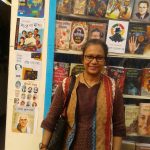

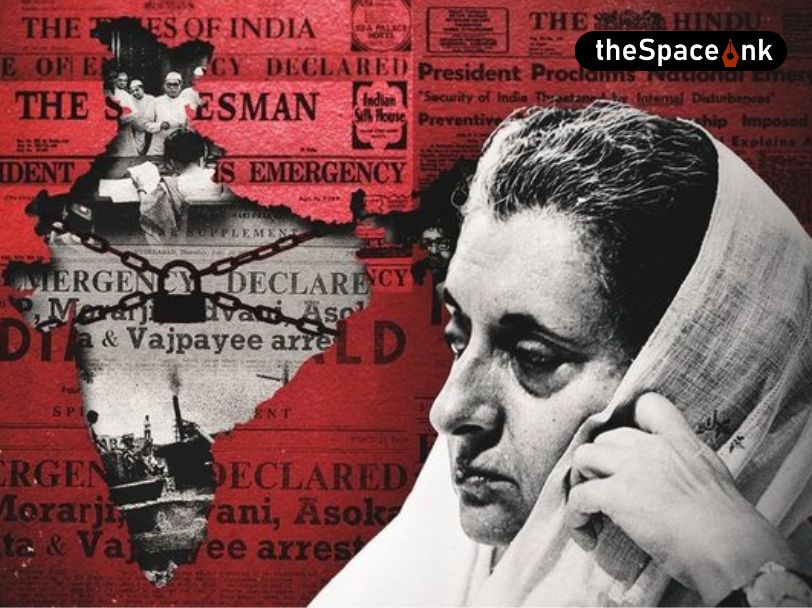


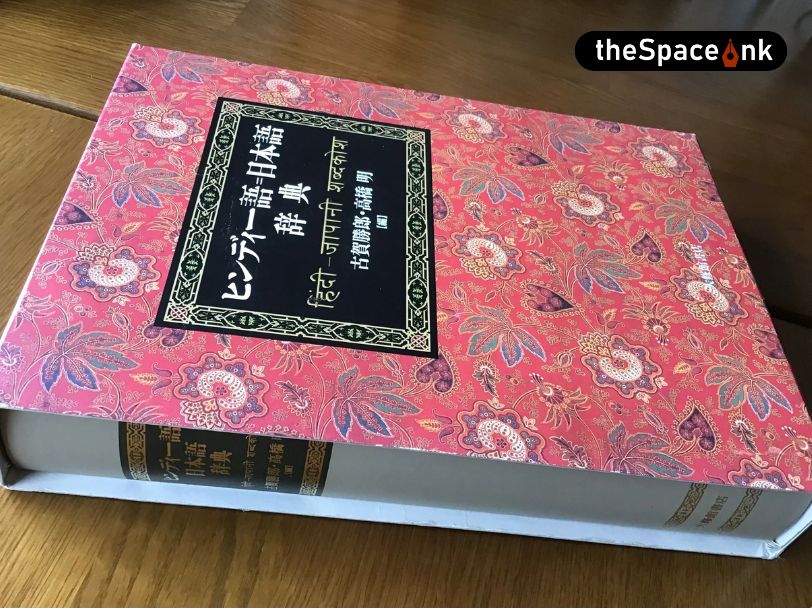
7 Responses
So well written that I could visualize it. Superb Haimanti
Thanks a lot Bindu.
After reading your touching article I was very nostalgic.He was a great human being.Miss him a lot
Thank you Anindya Banerjee. As a father, he was very loving and that’s saying the least. The fact that you liked my trek down memory lane, humbled me too. Thanks again.
This article has opened a gate deep inside me. I was his student in school. He never talked about his achievements. One day we, his students, were stunned to learn that this very affectionate man carried accolades of national level, silently stashed away in some corner of is satchel. But did you know he was a wonderful STORYTELLER?? on rare occasions like a rainy day, we could somehow coax him into telling stories. The y were spellbinding moments. Of course had seen him at the tea café at Deshapriya Park crossing. I passed HS in1970.
This article has opened a gate deep inside
me. I was his student in school. He never talked about his achievements. One day we, his students, were stunned to learn that this very modest man carried accolades of national level, silently stashed away in some corner of is satchel. But did you know he was a wonderful STORYTELLER?? on rare occasions like a rainy day, we could somehow coax him into telling stories. These were spellbinding moments. Of course had seen him at the tea café at Deshapriya Park crossing. I passed HS in1970.
I had acquired a work by him a long while back …. and so amazing to learn of this background and history. Provides great context and compels me to revisit the work, in light of this knowledge. Many thanks for this brilliant article.